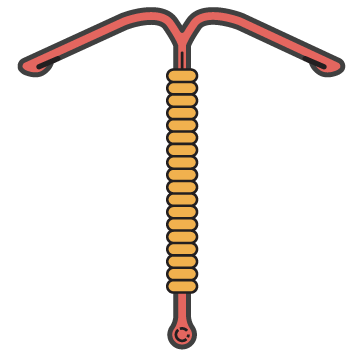The Benefits of Breastfeeding
Breast milk is the perfect food for your baby. It is really quite incredible. Your body produces milk that has all the nutrition to sustain the healthy growth and crucial early development of your child in its first year of life, but there is more to nursing than simply providing food to your baby. Breastfeeding is a wonderful way to nourish and bond with your baby while giving it a legacy of health advantages that will last into adulthood.
Breast Milk is Mother Nature’s Perfect Recipe
 The first milk that is produced immediately after birth is called colostrum, and it is colloquially known as “liquid gold” because it is so rich with the nutrients and antibodies that newborn babies need. Colostrum does not look like milk. It is a sticky, yellow serum and is only produced for the first few days of your child’s life, but its high concentration of essential nutrients is easier for your newborn’s immature digestive system to break down.
The first milk that is produced immediately after birth is called colostrum, and it is colloquially known as “liquid gold” because it is so rich with the nutrients and antibodies that newborn babies need. Colostrum does not look like milk. It is a sticky, yellow serum and is only produced for the first few days of your child’s life, but its high concentration of essential nutrients is easier for your newborn’s immature digestive system to break down.
As your baby grows, your milk will change to suit its evolving needs. Colostrum transitions into a white, thin milk that becomes fattier and more nutritious as your baby’s appetite increases. For the first six months of life breast milk has absolutely everything your baby requires for sustaining the healthy growth, but it does much more than simply feed your baby. Breast milk supports complex brain development, helps build the immune system, and contributes incomparably to the development of a healthy gut biome. In the first several months after your baby is born, breast milk lays the foundation for a lifetime of health.
What to Expect from a Hysterectomy Procedure
A hysterectomy is a common surgical procedure that involves the removal of the uterus for reasons relating to certain gynecological disorders. According to the Center for Disease Control, hysterectomies are the second most frequently received surgery among women of reproductive age in the United States (the average age is 42) after cesarean sections, with nearly half a million women getting a hysterectomy in this country each year.
Hysterectomy Surgery & Recovery
There are several different types of hysterectomy and a variety of surgical options. Doctors determine the best type and method for each patient, based on the underlying medical condition precipitating the hysterectomy and the individual’s personal health history.
- Total hysterectomy: The surgical removal of the entire uterus, to include removal of the cervix.
- Supracervical hysterectomy: The partial removal of the uterus, but the cervix remains intact.
- Radical hysterectomy: The removal of the entire uterus, including the cervix and the ligaments that hold the uterus in place. The ovaries may or may not be removed depending upon the specifics of each individual case.
The Benefits of Prenatal Vitamins for Your Pregnancy
 Taking a daily prenatal vitamin is one of the easiest things you can do to help encourage a healthy pregnancy. When combined with a well-balanced diet, prenatal vitamins help ensure that you and your baby are receiving the vital nutrition that is necessary throughout every stage of pregnancy.
Taking a daily prenatal vitamin is one of the easiest things you can do to help encourage a healthy pregnancy. When combined with a well-balanced diet, prenatal vitamins help ensure that you and your baby are receiving the vital nutrition that is necessary throughout every stage of pregnancy.
Why Prenatal Vitamins Are Important
During your pregnancy, your body’s nutritional requirements are different than at other times, and prenatal vitamins are designed for the specific needs of pregnant women. For example, prenatal vitamins have more iron, calcium, and folic acid than regular multivitamins. Folic acid, in particular, is an important part of any diet, but it is imperative for the pregnant woman. Folic acid is proven to be a crucial factor in preventing neural tube birth defects, which is why it is recommended that all women of child bearing age take a folic acid supplement, and also why pregnant women need to take more than the general population.
Understanding Ectopic Pregnancy Complications
An ectopic pregnancy is a serious complication of pregnancy that occurs when a fertilized embryo attaches outside of the uterus, most often in the fallopian tube. For this reason, it is sometimes also referred to as a “tubal pregnancy,” although in very rare cases an ectopic pregnancy can occur on the cervix, ovary, or elsewhere in the abdomen.
Ectopic pregnancies are a relatively uncommon condition that affects between 1% and 2% of women of reproductive age. Unfortunately, in the case of an ectopic pregnancy, the embryo is not viable since embryos cannot survive outside of the womb. If left untreated the condition can cause severe damage to reproductive organs and even become life-threatening.
Symptoms of Menopause and Perimenopause, and How to Cope
Menopause is often regarded in the broader culture as a mysterious condition that afflicts all middle aged women with mood swings and dramatic hot flashes. But that is a simplistic caricature of an important and normal biological process in every woman’s life.
The word “menopause” is often used as an umbrella term for a natural condition that is comprised of several distinct stages which commonly take place over the course of a few years. In its simplest terms, menopause describes the permanent cessation of a woman’s menstrual cycle, but the entire process of menopause is about more than just the end of periods. It is helpful to think of menopause as the inverse of puberty. If puberty marks the beginning of a woman’s reproductive years, menopause marks its end.

On the Clock: Calculating Ovulation
If you are trying to conceive, one of the best ways to increase your chances of getting pregnant is to monitor your ovulation cycle. If your periods are regular, keeping track of your ovulation cycle is a fairly straightforward process, but if your menstrual cycle varies from month to month, it can be difficult to know when your body is at its most fertile. Ovulation calculators that record your fertility each calendar month, and ovulation predictor kits that measure your hormone levels, can be useful aids in the quest to conceive.
What is Ovulation?
Every month, an egg cell matures in an ovary. When the egg is mature, it is released into the fallopian tube and guided into the uterus where it can be fertilized by sperm. Once the egg is in the uterus, it is available for fertilization for about a day. This brief window is the only time in a given month when it is possible become pregnant. However, since sperm can remain active and viable inside the female body for between three and five days, a couple increases their chances of conceiving if they have intercourse in the days just prior to and following ovulation.
Eating for Two? Getting the Skinny on Weight Gain During Pregnancy
Weight gain is a sensitive subject for everyone. And it can feel even more sensitive and complicated in the context of pregnancy when your body is changing quickly, and in ways that are beyond your control. It is perfectly normal and even healthy to gain weight in pregnancy, but how much weight should you expect to put on, and at what rate?
Eating for Two?
Pregnancy is the one time in a woman’s life when she might feel like she is finally able to stop watching her weight and indulge in every late night craving. On the other hand, it may be a time of anxiety for other women as they watch their bodies change and the number on the scale rise.
The overall goal for any pregnancy should not be about a particular number on a scale or comparing your baby bump to anyone else’s baby bump. It should be about achieving or maintaining your personal level of optimum health. This is best for you and for your baby.

The A to Z of IUDs

IUD is an acronym for Intrauterine Device, and it is one of the most convenient and effective forms of birth control. There are different types of IUD, but in its most basic form it is a small T- shaped apparatus that, when placed into the uterus by your ob/gyn, prevents pregnancies from occurring.
How Does an IUD Work?
Hormonal IUDs
There are two main types of IUD: hormonal and non-hormonal. Hormonal IUDs are made out of plastic and they release a constant low dose of a synthetic hormone called progestin which prevents the ovaries from releasing their eggs. The hormonal IUD further increases its effectiveness by causing cervical mucus to thicken. This adds an additional layer of defense against sperm.
4 Health Habits You Should Change in National Women’s Health Week
Every day, there seems to be some new gimmick that emphasizes weight loss and “high-school skinny.” There are thousands of advertisements, drinks, supplements and programs that prey on women’s insecurities.
While having a fit body does have its perks, that doesn’t necessarily mean that you have achieved balanced well-being. A healthy lifestyle comes from feeding both the mind and the body through positive and sustainable habits and experiences.
Get At Least 7 Hours of Sleep Per Night
While this may seem like a no-brainer, seven hours of deep, restful sleep can be difficult for a lot of women to get. According to Women’s Day, 35 percent of Americans get less than seven hours of sleep every night. You already know that lack of sleep can lead to exhaustion, but did you know that it can increase your risk of heart disease and Type 2 Diabetes?
What to Expect at Your First Gynecology Exam
 The thought of having your first gynecology exam might be nerve wracking, but it is a straightforward and quick procedure that is an important part of maintaining your overall health. Once you understand the purpose of the annual well woman exam and what it involves, you will realize that there is nothing to worry or be embarrassed about.
The thought of having your first gynecology exam might be nerve wracking, but it is a straightforward and quick procedure that is an important part of maintaining your overall health. Once you understand the purpose of the annual well woman exam and what it involves, you will realize that there is nothing to worry or be embarrassed about.
The purpose of your routine annual gynecology exam is to allow a health care provider to check your female organs to ensure and maintain good gynecological health. The physical portion of the exam takes about 10 minutes and there is a time before and after the exam to ask and answer any questions you and your health care provider might have.
Zika Virus Risk for Pregnancy & Babies in the Midwest - KC ObGyn
 By now you’ve heard the news about the Zika virus and if you’re pregnant, you may be worrying for two (or more!). We’ve been getting a lot of questions from expecting mothers about the nasty-sounding bug, and we wanted to address your concerns and give you some tips to avoid the dangerous Zika virus.
By now you’ve heard the news about the Zika virus and if you’re pregnant, you may be worrying for two (or more!). We’ve been getting a lot of questions from expecting mothers about the nasty-sounding bug, and we wanted to address your concerns and give you some tips to avoid the dangerous Zika virus.
What is Zika virus?
The Zika virus is contracted from Aedus -- the mosquitos that also carry yellow fever and dengue mosquito bites. In 1947, scientists found monkeys that carried the disease in the Zika Forest of Uganda. For most people the symptoms of the Zika virus are relatively mild. It should be noted that severe illness or death from the Zika virus is extremely rare, but the potential complications for pregnancies and babies is quite serious.






